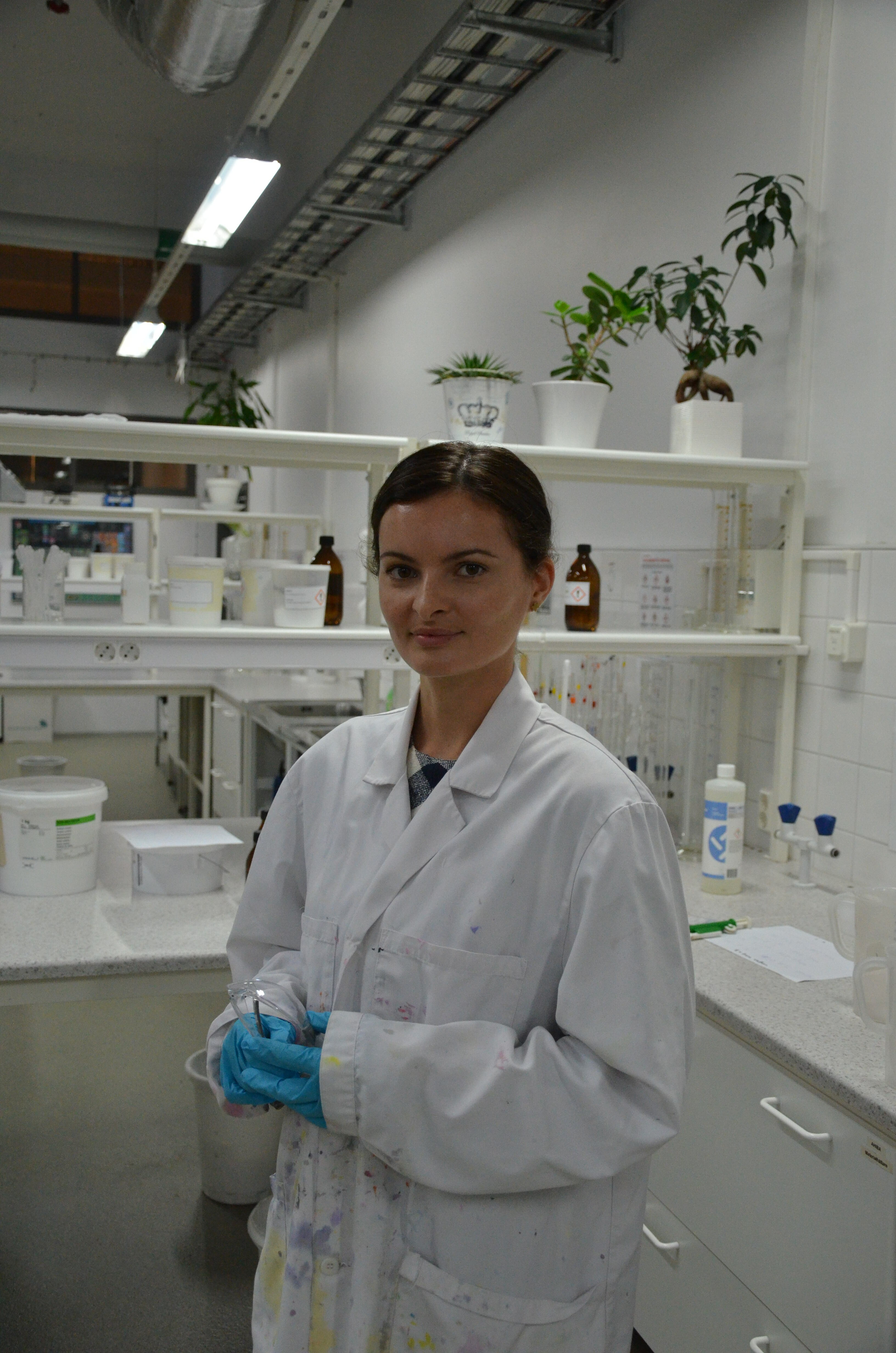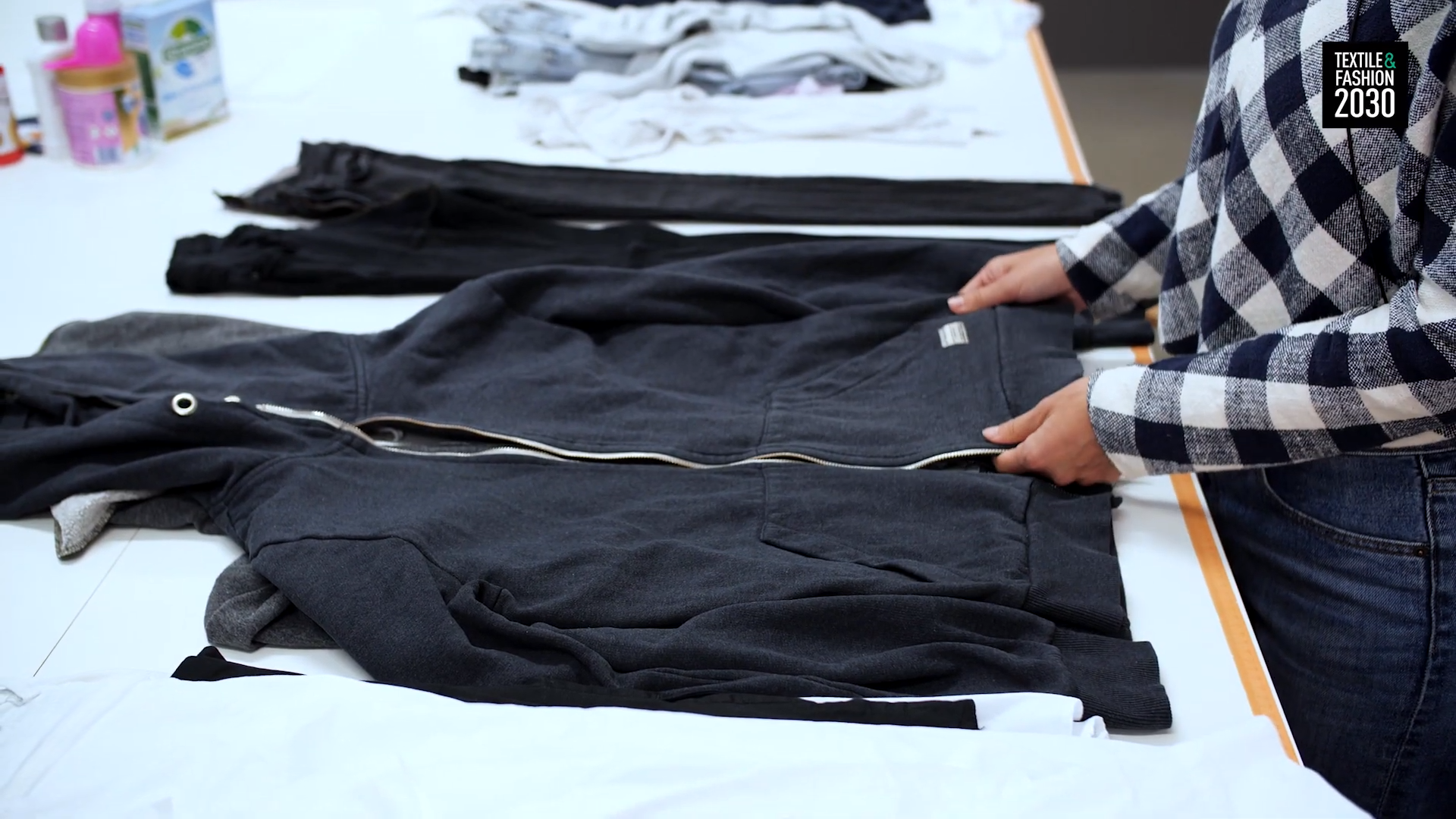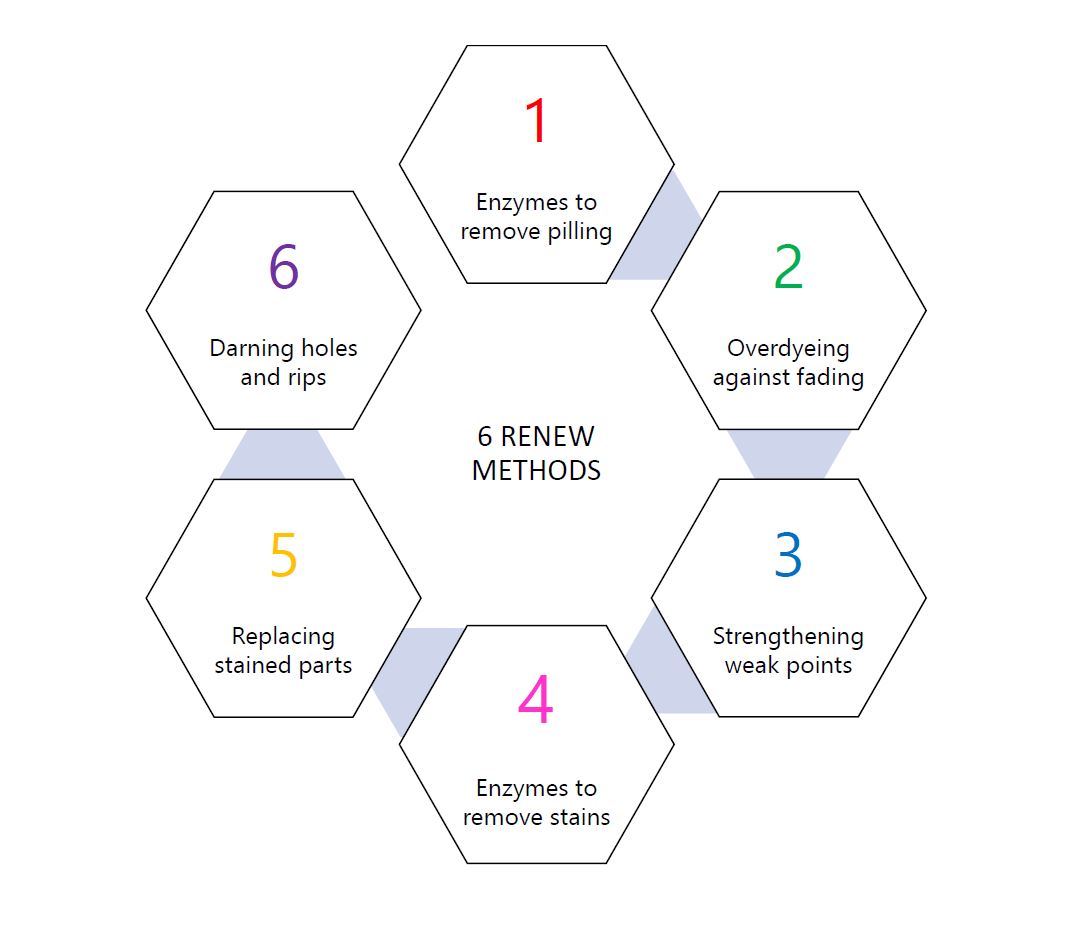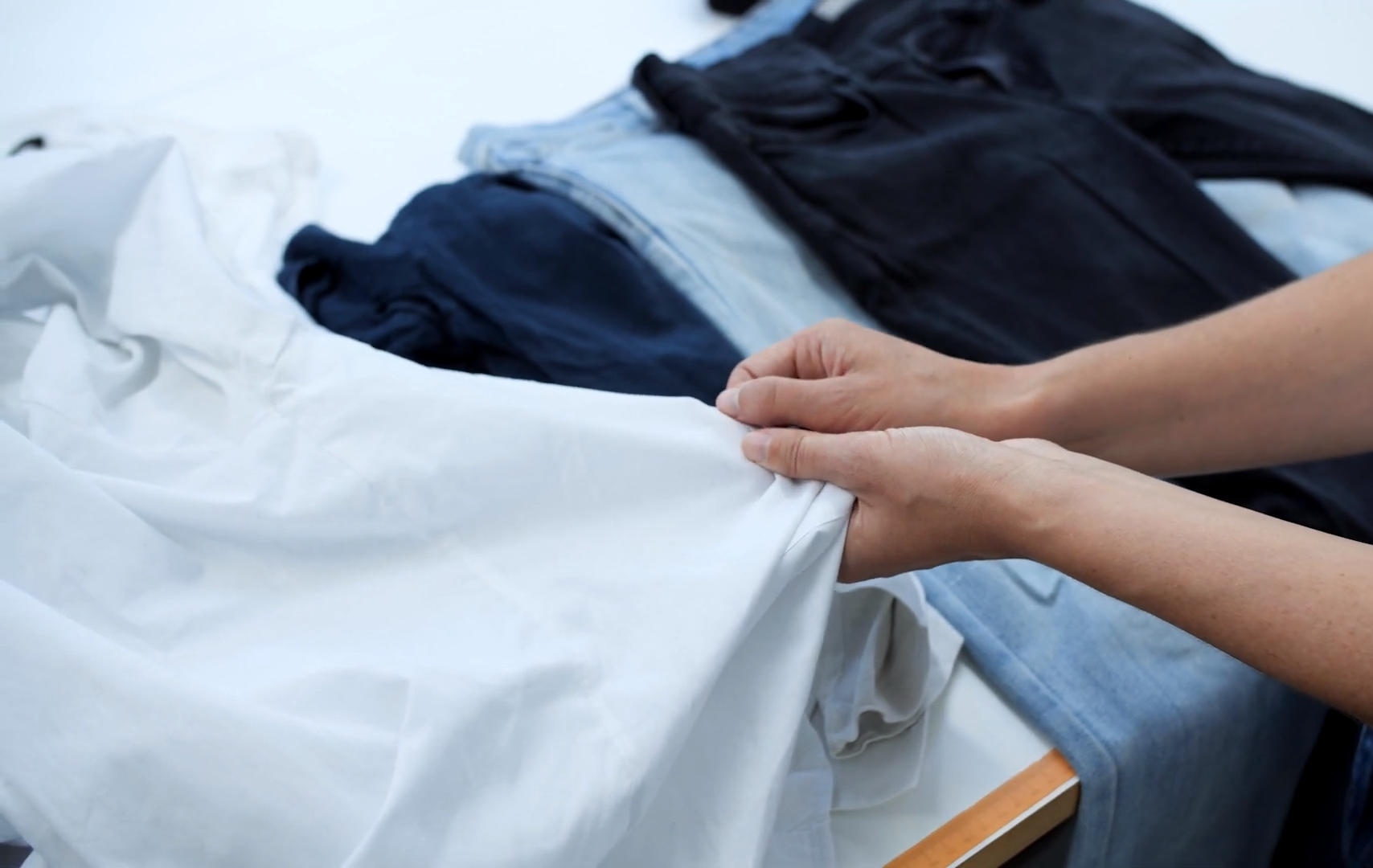
- Re:Set
- Re:Make

The approach aims at addressing the challenge of prolonging the lifespan of garments, in particular design classics, in order to reduce waste and increase resource efficiency. The idea has been to develop methods of renewing that enable a circular system, where consumers give compromised clothing back to the designer and the designer can make improvements and give a renewed garment back to the consumer. Making your old garments look and feel new again.
Items
– Re:Set Hoodie A grey hoodie with pilling has been treated with enzymes which have effectively eaten away some of the white pilling for a fresher look and richer color.
– Re:Set Shirt: A white shirt has been treated with enzymes which have removed some of the stains on the collar for a fresher look. Also, a section under the sleeve which had irreversible
sweat staining has been replaced using upcycled fabric.
– Re:Set Jeans: A small amount of overdye was applied to a pair of faded black jeans in order to refresh the color. An unwanted tear near the crotch of the jeans has been darned to create
an invisible repair.
Naomi Bailey-Cooper in partnership with Dying and Finishing lab at the Swedish School of Textiles









The fashion industry is facing problems with overproduction and leftover clothes. One way of addressing these problems is by being creative with clothes seen as “dead garments”, such as garment returns and samples from product development. Turning men’s styles into women’s styles, changing garment shapes, adding prints and details can bring new life to these garments – making them attractive to consumers again.
One way to make remake an attractive business opportunity for established fashion brands is through microfactories. A small-scale textile production line that include all the necessary steps, from sketch and cutting tables to sewing and even product photography.
The result could be a mini collection of remade garments, up to date and in line with the demands of today’s customers. Ready to be sold in the online store in less than a week.
All group objects:
Sustainable consumption may seem contradictive and far-fetched. However, in the space between these words, opportunities for new behaviors, policy instruments, and business models open up, allowing for more conscious consumption.
Platforms such as F/ACT Movement have now been established to help fashion consumers to make more conscious decisions while at the same time enhancing their ability to express themselves through their outfits.
Consumer’s desire to make more sustainable choices, governmental green incentives, and industry’s resource conscious innovation give opportunities to create better systems that allow consumers more opportunities to live out their desire for fashion and textiles.